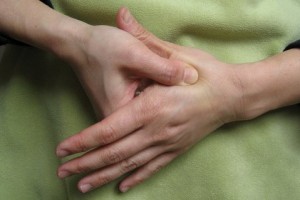
More evidence that low-calorie sweeteners are bad for your health
Studies show that artificial sweeteners can raise the risk of hypertension, metabolic syndrome, type 2 diabetes and heart disease, including stroke.

Natural Health News — About 20% of us suffer from it – but it’s not one of those topics that gets a lot of publicity.
Constipation can make life uncomfortable, with the digestive condition being more common among women, non-whites, people older than 60, those who are not physically active and the poor.The costs in terms of healthcare expenditure are also significant. Hospital costs to treat the condition were estimated at $4.25 billion in the US in 2010 alone. In 2013 the UK spent £59 million treating constipation.
Constipation can have other side effects such as depression, lower quality of life and a drop in work productivity. Treatments include use of laxatives, increased intake of dietary fibre and fluid, and exercise.
But new research from the UCLA Center for East-West Medicine published online in the Journal of General Internal Medicine shows how Eastern and Western medicine can blend to find solutions to this common medical problem. In a randomized clinical trial, 72% of participants said that perineal self-acupressure, a simple technique involving the application of external pressure to the perineum – the area between the anus and genitals – helped them have a bowel movement.
The research suggests that all primary care and general internal physicians should consider this technique as a first line intervention together with conventional treatment, said Dr. Ryan Abbott, the study’s principal investigator.
“Constipation is very common and can have debilitating symptoms,” said Abbott, who is also a researcher and educator with the East-West Center. “But patients can perform this simple intervention themselves to treat their own constipation and improve their quality of life. It can also help to limit health care costs and excessive medication use.”
The researchers recruited 100 patients, nine of whom dropped out during the trial, age 18 and older whom met the established criteria for functional constipation. Among these criteria are that they have fewer than three defecations per week and that for at least 25% of the their bowel movements they:
A high success rate
After researchers gave patients just three to five minutes of instruction, patients were encouraged to perform the exercises on their own for four weeks when they felt the urge to defecate. Patients reported using the technique three to four times a week on average. The self-acupressure broke up hard stools, relaxed muscles and stimulated nerves responsible for bowel movements.
Among the other findings:
“This unique self-administered acupressure treatment for constipation is just one example of how an integrative approach to medicine helps patients and is cost-effective, too,” said Dr. Ka-Kit Hui director of the UCLA Center for East-West Medicine.
“Utilizing both Eastern and Western approaches helps create a new paradigm of medicine that combines the best of both worlds.”
There are some limitations to this study, it was, for example, relatively small, with fewer than 100 patients completing the study, but it does provide evidence that the technique could be useful in tandem with other treatments.
“As a non-invasive, non-pharmacological treatment intervention for constipation, perineal self-acupressure likely carries a lower risk for side effects and complications than commonly used medications such as stool softeners, fiber supplements, stimulants, laxatives and lubricants,” the researchers write.
“In addition, perineal self-acupressure may help to control treatment costs because it only requires a brief, initial period of training. Furthermore, not all patients respond favorably to existing treatment options, and perineal self-acupressure may represent an effective alternative to conventional treatment options.”

Please subscribe me to your newsletter mailing list. I have read the
privacy statement